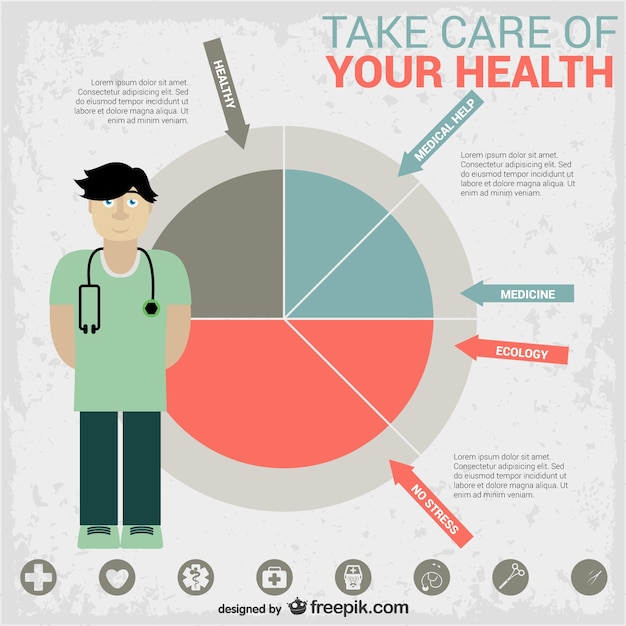Decoding Your Health Insurance 2025: Deductibles, Co-pays, Coinsurance

Decoding your health insurance plan for 2025 involves understanding key components like deductibles, co-pays, and coinsurance, which dictate your out-of-pocket expenses and the total cost of healthcare services you’ll pay throughout the year.
Navigating the complexities of health insurance can feel overwhelming. This guide aims demystify the key elements of your 2025 health insurance plan. By understanding terms like deductibles, co-pays, and coinsurance, you can make informed decisions about your healthcare coverage.
Understanding Health Insurance: An Overview
Health insurance spreads the financial risk of healthcare across a large group of people, protecting individuals from potentially crippling medical costs. Understanding the basic structure of your plan is essential before delving into specific cost-sharing components. This is particularly true as healthcare costs and insurance plan designs evolve each year.
The Purpose of Health Insurance
Health insurance primarily functions as a buffer against high and unforeseen medical expenses. It ensures that individuals can access necessary healthcare without facing significant financial strain. By pooling risks, insurance companies can provide coverage at a more manageable cost for its policyholders.
Key Components of a Health Insurance Plan
A typical health insurance plan consists of several key elements beyond just deductibles, co-pays, and coinsurance. These include premiums, which are monthly payments for coverage, and the network of healthcare providers considered ‘in-network’ for your plan. Understanding these components is equally essential for making informed choices.
- Premiums: The monthly payment you make to maintain your health insurance coverage. These are paid whether you use the plan or not.
- Network: The group of doctors, hospitals, and other healthcare providers that your insurance plan has contracted with to provide services at a negotiated rate.
- Covered Services: The specific medical services, treatments, and procedures that your health insurance plan will pay for.
- Out-of-Pocket Maximum: The most you’ll have to pay in a year for covered medical expenses. After you meet this limit, your insurance plan pays 100% of covered expenses.
Understanding these basic elements provides a solid foundation for comprehending the more nuanced details of your health insurance plan, particularly how deductibles, co-pays, and coinsurance impact your actual healthcare costs.

Decoding Your Deductible for 2025
A deductible is the amount you pay out-of-pocket for covered healthcare services before your insurance plan starts to pay. It’s essentially the financial hurdle you need to clear before the insurance company shares the cost of your medical expenses. Deductibles reset annually, typically at the beginning of each calendar year.
How Deductibles Work
Let’s say your deductible is $2,000. This means that for covered medical services, you’ll pay the first $2,000. After you have paid this amount, your insurance begins to cover a portion of your healthcare expenses, based on your coinsurance or co-pay terms.
Types of Deductibles
Deductibles can vary by plan type. Some plans feature individual deductibles, applying only to the individual covered. Others have family deductibles, where the entire family needs to meet a certain amount before coverage kicks in for all members.
- Individual Deductible: Applies to a single person covered by the health insurance plan.
- Family Deductible: The total amount that the entire family needs to pay before the insurance starts covering costs for each family member.
- Embedded Deductible: A type of family deductible where each individual also has their own deductible, but once the family deductible is met, all family members are covered, even if some individual deductibles haven’t been met.
Understanding your deductible is a critical first step in budgeting for your healthcare expenses in 2025. Knowing how it works within your specific plan allows you to make informed decisions about when to seek care and how to manage costs.
Co-pays: Your Fixed Healthcare Cost
A co-pay, or co-payment, is a fixed amount you pay for a covered healthcare service. This amount is typically paid at the time you receive the service. Unlike a deductible, a co-pay doesn’t contribute toward meeting your deductible. It’s a separate, predictable cost associated with specific types of care.
Understanding How Co-pays Work
Let’s say your plan has a $25 co-pay for a visit to your primary care physician. Each time you visit your doctor, you will pay $25, regardless of the total cost of the visit. This provides predictability in your healthcare expenses and allows for better budgeting.
Services Typically Requiring Co-pays
Co-pays usually apply to routine healthcare services such as doctor’s visits, specialist appointments, and prescription medications. The amount of the co-pay can vary depending on the type of service and the tier of the medication.
- Primary Care Visits: Often have the lowest co-pay amounts.
- Specialist Visits: Typically have higher co-pays than primary care visits.
- Emergency Room Visits: Usually have the highest co-pays.
Being aware of the co-pays associated with different services helps you understand the immediate out-of-pocket costs you’ll incur when seeking medical attention. This is particularly valuable when deciding whether to schedule a doctor’s appointment or seek alternative care options.
Coinsurance: Sharing Costs After the Deductible
Coinsurance is the percentage of covered healthcare expenses you pay after you’ve met your deductible. It’s a cost-sharing arrangement between you and the insurance company. Understanding your coinsurance percentage is vital for estimating your healthcare costs after meeting your deductible.
How Coinsurance Works in Practice
For instance, if your coinsurance is 20%, the insurance company pays 80% of the covered expenses, and you are responsible for the remaining 20%. This continues until you reach your out-of-pocket maximum for the year.
Calculating Your Coinsurance Costs
To estimate your potential costs under coinsurance, consider a scenario where you’ve met your deductible and incur $1,000 in covered medical expenses. With a 20% coinsurance, you would pay $200, while your insurance covers the remaining $800.
The Role of Coinsurance in Overall Healthcare Costs
Coinsurance plays a significant role in managing your total healthcare expenses. It incentivizes you to use healthcare services wisely, as you’re still responsible for a portion of the cost. Here’s a quick breakdown of how coinsurance fits into the bigger picture:
- After Deductible: Coinsurance costs occur only after you’ve met your annual deductible, meaning you’ve already paid a significant amount in healthcare expenses.
- Out-of-Pocket Maximum: You continue to pay coinsurance until your total out-of-pocket expenses (including deductibles, co-pays, and coinsurance) reach your plan’s out-of-pocket maximum.
- Predictable Percentage: Coinsurance provides a predictable percentage for cost-sharing, making it easier to estimate potential expenses for various healthcare services.

Strategies for Minimizing Out-of-Pocket Costs
Managing and minimizing out-of-pocket healthcare costs involves a multifaceted strategy. Understanding the nuances of your health insurance plan, utilizing preventive care, and making informed decisions about healthcare services can significantly reduce your financial burden. Proactive planning and informed choices are key to optimizing your healthcare spending.
Understanding Your Plan Details
Knowing the specifics of your deductible, co-pays, and coinsurance is the first step toward minimizing costs. This knowledge empowers you to anticipate expenses and make educated decisions about your care.
Taking Advantage of Preventive Care
Many health insurance plans offer free preventive services, like annual check-ups and screenings. These services can help detect potential health issues early, preventing more costly treatments down the line.
Choosing In-Network Providers
Opting for healthcare providers within your insurance network ensures that you receive services at negotiated rates, reducing your overall costs. Out-of-network providers can lead to significantly higher expenses.
- Annual Check-ups: Most plans fully cover annual physicals, allowing for early detection and prevention.
- Vaccinations: Staying up-to-date with recommended vaccines can prevent illnesses that require expensive treatment.
- Screenings: Regular screenings for conditions like cancer and heart disease can catch problems early when they are more treatable.
By proactively managing your healthcare and making smart choices, you can effectively minimize your out-of-pocket costs and maintain better financial health.
Health Savings Accounts (HSAs) and Flexible Spending Accounts (FSAs)
Health Savings Accounts (HSAs) and Flexible Spending Accounts (FSAs) are powerful tools for managing healthcare expenses. These accounts allow you to set aside pre-tax dollars to pay for eligible medical costs, effectively reducing your taxable income while saving for healthcare.
Health Savings Accounts (HSAs)
An HSA is a tax-advantaged savings account available to individuals enrolled in a high-deductible health plan (HDHP). Contributions to an HSA are tax-deductible, the funds grow tax-free, and withdrawals for qualified medical expenses are also tax-free.
Flexible Spending Accounts (FSAs)
An FSA is an employer-sponsored account that allows employees to set aside pre-tax dollars for eligible healthcare expenses. Unlike HSAs, FSAs typically have a “use-it-or-lose-it” rule, requiring you to spend the funds within a specific timeframe, usually a year.
Using HSAs and FSAs effectively requires careful planning and an understanding of eligible expenses. Here’s how to maximize these accounts:
- Estimate Expenses: Accurately estimate your potential healthcare expenses for the year to determine how much to contribute.
- Utilize Funds Wisely: Use the funds for eligible medical, dental, and vision expenses.
- Understand Deadlines: Be aware of any deadlines for spending the funds, particularly with FSAs.
Predictions and Changes in Health Insurance for 2025
Health insurance is a dynamic field, with changes occurring annually due to evolving healthcare costs, regulations, and market forces. Keeping abreast of potential changes and industry predictions can help you anticipate and adapt to new developments in your health insurance plan.
Potential Regulatory Changes
Government regulations play a significant role in shaping the health insurance landscape. Legislation related to the Affordable Care Act (ACA), healthcare coverage requirements, and market stabilization can have a profound impact on plan designs and costs.
Anticipated Cost Increases
Healthcare costs are projected to continue rising in 2025, impacting insurance premiums, deductibles, co-pays, and coinsurance rates. Factors such as inflation, technological advancements, and an aging population contribute to these cost increases.
Trends in Plan Design
Health insurance plans may evolve to incorporate new technologies, telemedicine services, and wellness programs. Value-based care models, which focus on quality and outcomes rather than volume, may become more prevalent.
| Key Concept | Brief Description |
|---|---|
| 💰 Deductible | Amount you pay before insurance starts covering costs. |
| 🏥 Co-pay | Fixed amount you pay for specific services like doctor visits. |
| 📊 Coinsurance | Percentage you pay for covered services after meeting your deductible. |
| 🛡️ HSA/FSA | Tax-advantaged accounts for healthcare expenses. |
Frequently Asked Questions (FAQ)
▼
A deductible is the amount you pay for covered healthcare services before your insurance plan starts to pay. It’s like a financial hurdle you must clear each year.
▼
A co-pay is a fixed amount you pay for a service, while coinsurance is a percentage of the total cost you pay after meeting your deductible.
▼
Choose in-network providers, take advantage of preventive care, and consider a high-deductible plan with an HSA to potentially lower your costs.
▼
The out-of-pocket maximum is the most you’ll have to pay for covered medical expenses in a year. After that, your insurance covers 100%.
▼
HSAs and FSAs are tax-advantaged accounts that allow you to save money for eligible healthcare expenses, offering significant tax benefits.
Conclusion
Understanding the intricacies of your health insurance plan, including deductibles, co-pays, and coinsurance, is crucial for making informed healthcare decisions in 2025. By proactively managing your plan and healthcare choices, you can minimize costs and ensure access to the care you need.





